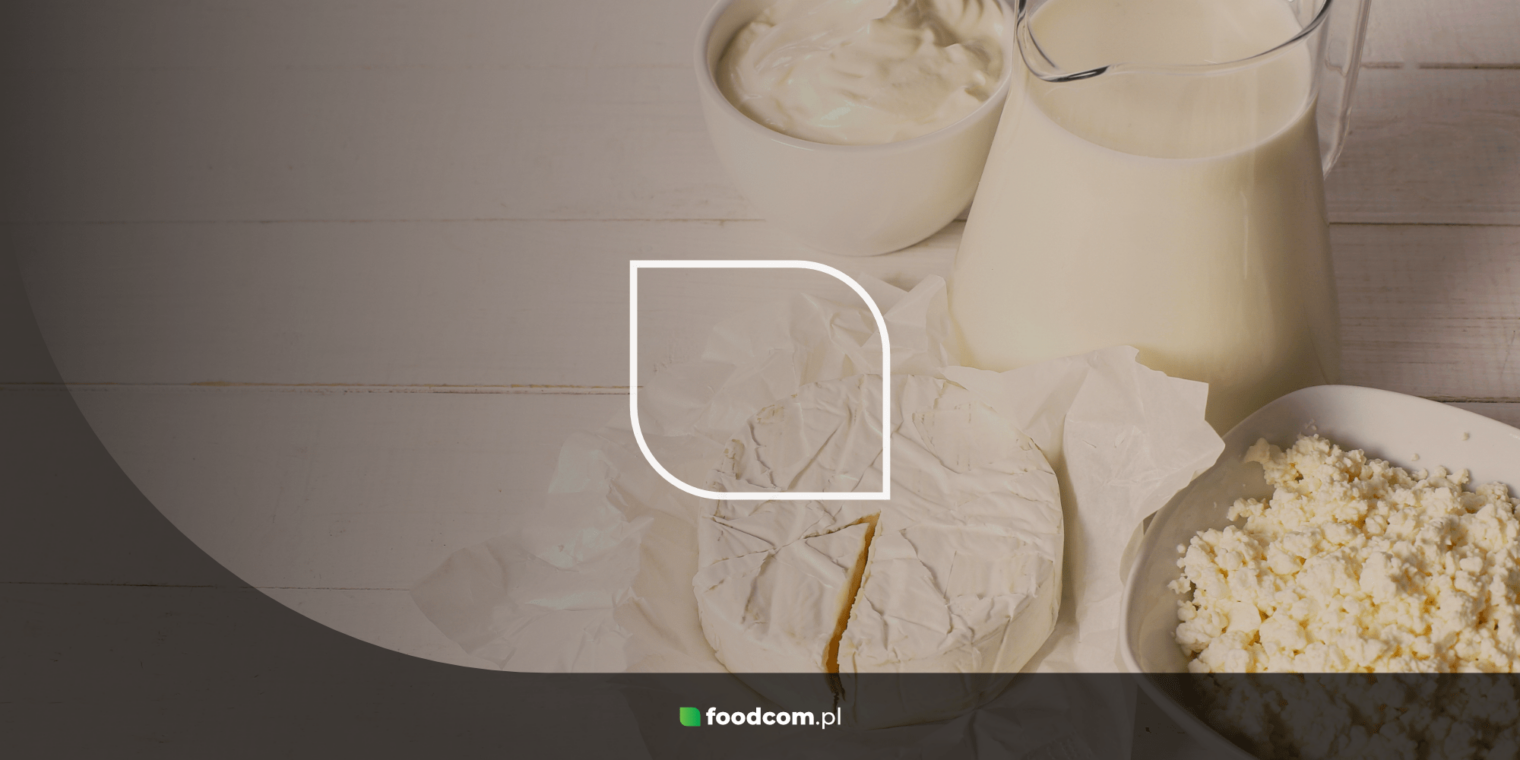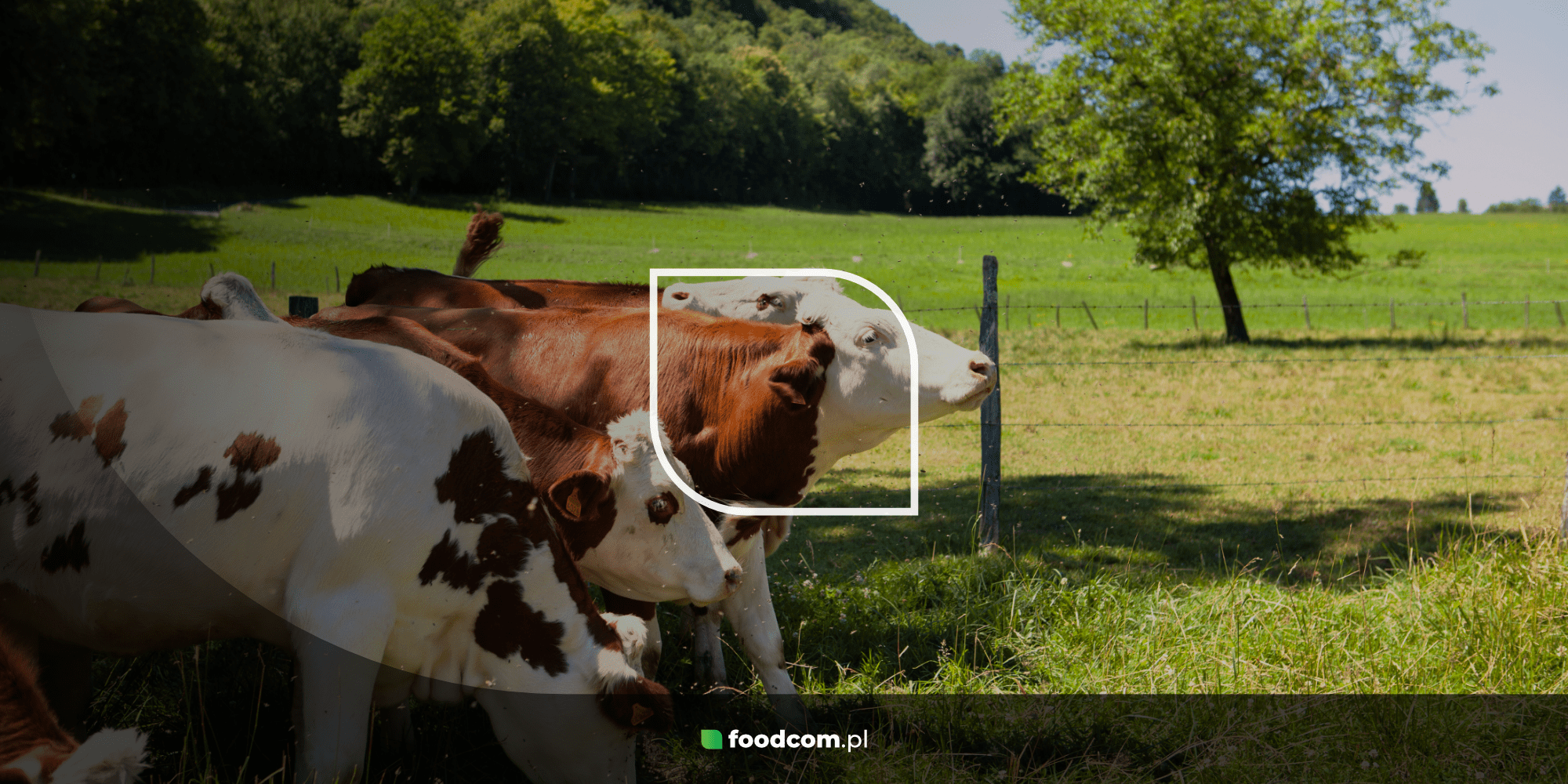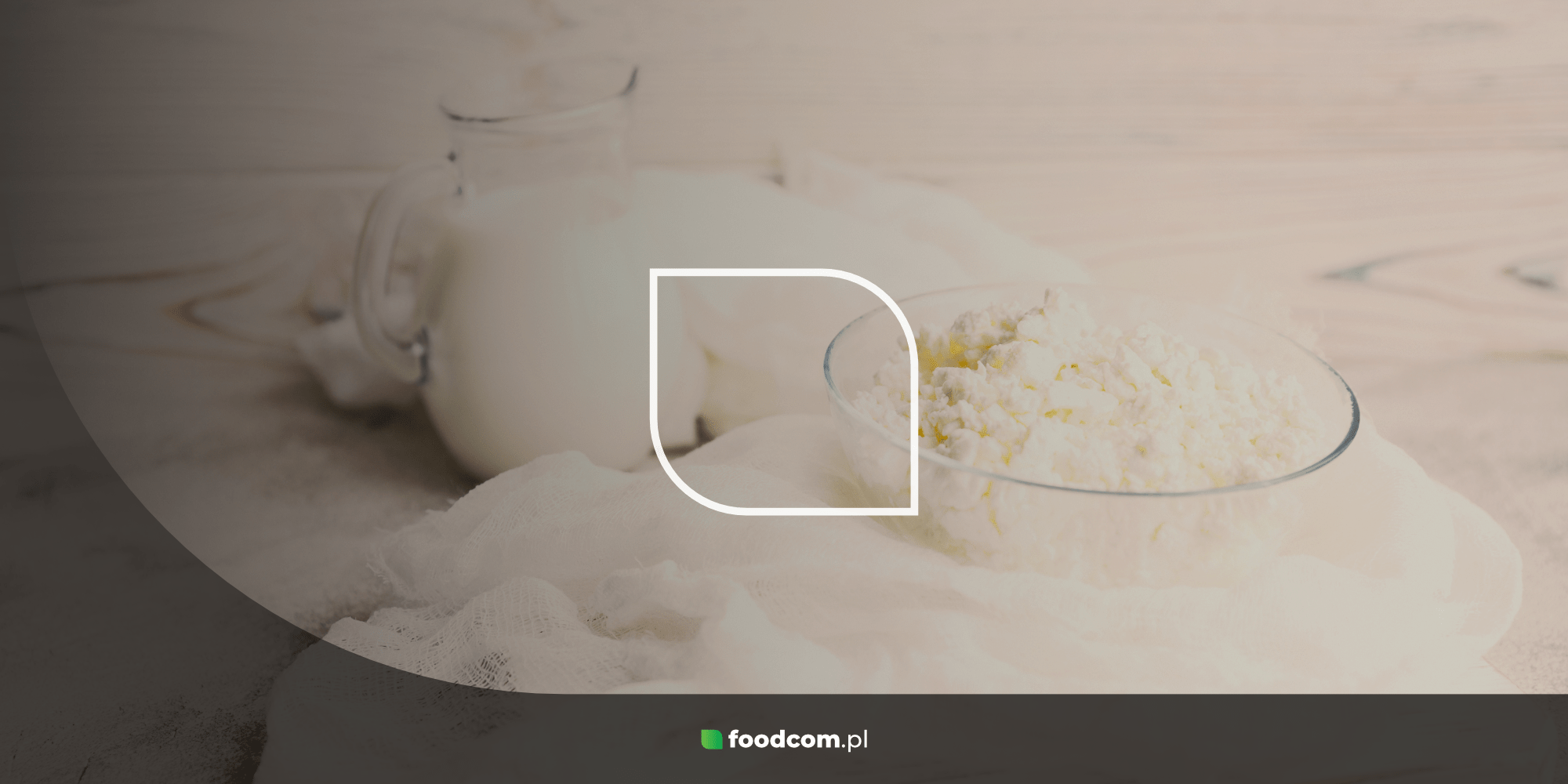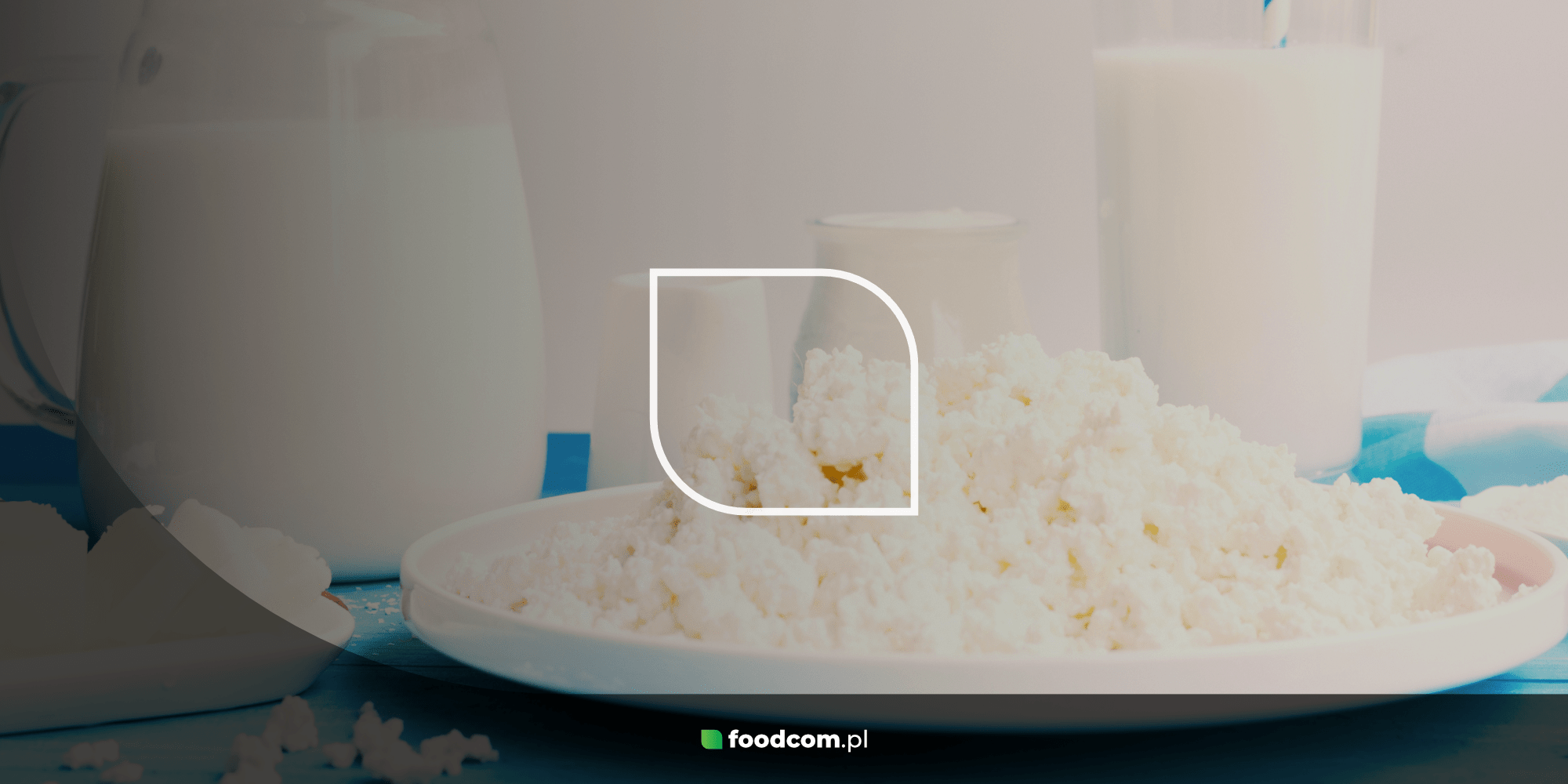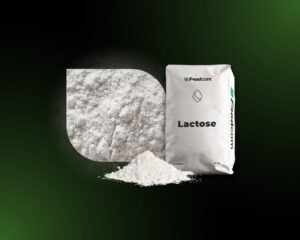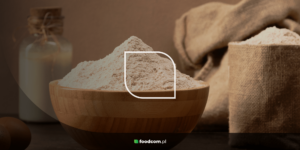- Lactose is a natural milk sugar – a disaccharide composed of glucose and galactose – that is a key source of energy for newborns and infants.
- It is commonly found in mammalian milk and dairy products such as yogurts, cheeses and fermented milks, but also in medicines and food products.
- Its applications include the food, pharmaceutical and cosmetic industries, where it acts as a stabilizer, filler and emulsifier.
- Lactose intolerance results from a lack of the enzyme lactase, forcing many people to turn to lactose-free products.
What is lactose?
Lactose, also known as milk sugar, is a natural compound from the carbohydrate group – a disaccharide found in mammalian milk. It is a compound made up of two monosaccharides: glucose and galactose, linked by a beta-1,4-glycosidic bond. Its structural formula is C₁₂H₂₂O₁₁.
In mammals, lactose acts as an important source of energy in the first months of life – it is one of the main nutrients present in milk. In the human body, it is broken down by the enzyme lactase into the simple sugars glucose and galactose, which can be absorbed into the bloodstream. The highest lactase activity is found in newborns and infants, while some adults develop lactose intolerance due to reduced activity of this enzyme.
Occurrence of lactose
As already mentioned, lactose is naturally present in mammalian milk. Its content varies depending on the mammalian species. For example, breast milk contains approximately 7% lactose, making it one of the richest sources of this sugar. Cow’s milk, on the other hand, has an average of 4.7% lactose. Goat and sheep milk contain less lactose, making it often better tolerated by people with mild lactose intolerance.
Lactose is not only found in fresh milk – it is also contained in dairy products such as yoghurt, cream, kefir, buttermilk, ice cream and, to a lesser extent, in cheese and processed cheese. Lactose is also found as an additive in many food and pharmaceutical products.
Properties of lactose
Lactose takes the form of a fine, free-flowing powder that is pale yellow in colour. As a carbohydrate, it provides the body with a large number of calories. It has a mildly sweet taste, milder than glucose or sucrose, while also having a lower glycaemic index.
It dissolves well in water, making it easy to use in a variety of products. It also acts as an emulsifier and texture enhancer. It is hygroscopic, so it can be used in products that require water absorption. It is also resistant to chemical agents and does not interact with other product ingredients.
Depending on the degree of hydration, lactose comes in two forms. These are:
- lactose monohydrate – contains one water molecule in its structure, which affects its texture and properties;
- anhydrous lactose – is devoid of water, which increases its stability and extends its shelf life.
Uses of lactose
Lactose is widely used in the food, pharmaceutical and cosmetic industries. Here are its main areas of application:
Food industry
Lactose powder is used in the production of many foodstuffs. It has nutritional and auxiliary functions in products such as:
- confectionery – lactose is an ingredient in chocolates, caramels and other sweets, where it acts as a flavour and texture stabiliser;
- bakery products – thanks to its caramelisation ability, lactose improves the colour and flavour of baked goods;
- dairy and fermented beverages – provides a substrate for fermentation bacteria in the production of yoghurts and kefirs;
- dietary supplements, protein supplements and replacement milks, where it has a mainly nutritional role;
- in traces, lactose can also be found in cured meats and other meat products;
- beer – lactose is not broken down by most beer yeasts, which is why it is sometimes used to sweeten certain types of beer.
Pharmaceutical industry
In the pharmaceutical industry, lactose is used as a carrier for active substances in tablets and capsules. Its low chemical reactivity and stability make it an ideal drug filler. In this role, it helps to achieve adequate dilution of the active substance and its even distribution in the tablet, increases the viscosity of the medicines and additionally improves their taste. Lactose can also be found in homeopathic medicines.
Other applications
Lactose is used as a carbohydrate source in fermentation processes, especially in the production of cheese and other dairy products. In addition, lactose concentrate from whey is sometimes used as feed for livestock, mainly pigs. Lactose can also be found in certain cosmetics and in pyrotechnic products such as smoke mixtures and flares.
Lactose production
Lactose powder is obtained by processing whey – a by-product of cheese production. The technological process for the production of lactose involves several steps to obtain the product in the form of a fine crystalline powder. Let’s take a look at what they consist of:
- separation of proteins and fats – the whey undergoes ultrafiltration to remove larger particles;
- concentration – the purified liquid is concentrated (e.g. by evaporation) and the lactose starts to crystallise;
- drying – in the final step, the lactose crystals are dried and ground into a fine powder.
Lactose market
The lactose market has been growing rapidly in recent years. Increased demand for dairy and pharmaceutical products is contributing to the growing demand for this ingredient. There is growing interest in functional foods, in which lactose is one of the key ingredients, as well as in high-quality pharmaceutical products. On the other hand, more and more people are turning to lactose-free products.
Lactose powder is offered by many global dairy manufacturers, such as Lactalis, Lakeland Dairies and Lacthosa. On the Polish market, the company Foodcom S.A., which supplies high-quality lactose powder, deserves attention.
Lactose is an extremely versatile ingredient that plays a key role primarily in the food and pharmaceutical industries. Its unique properties, such as stability and pleasant taste, make it an invaluable ingredient in many products.

